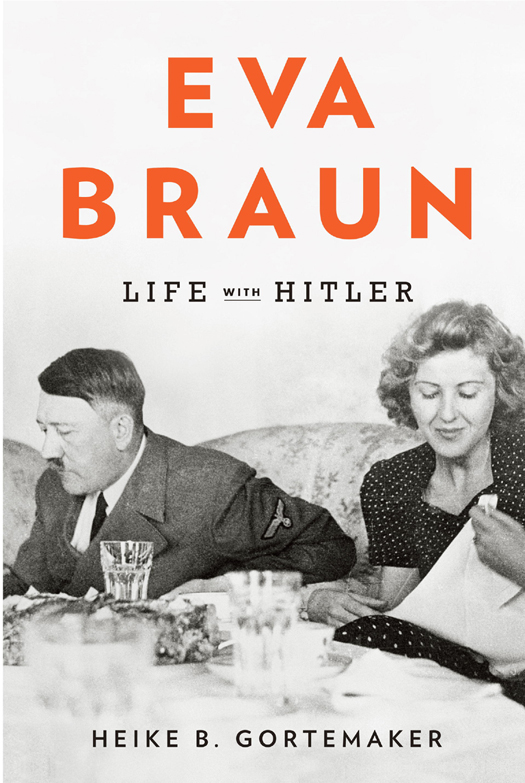
Eva Braun
Life with Hitler
کتاب های مرتبط
- اطلاعات
- نقد و بررسی
- دیدگاه کاربران
نقد و بررسی

August 8, 2011
Known today primarily from a handful of personal photos with the Führer and the reminiscences of his closest aides, Eva Braun is often thought of as a stereotypically vapid dumb blond, in thrall to Hitler’s magnetism, but ignorant of and uninterested in the political tumult he caused. Braun, 23 years Hitler’s junior, was long thought to have been merely the leader’s arm candy, never having a truly intimate or emotional bond with the man who said the only bride he would consent to marry was Germany itself. Görtemaker challenges these assumptions in the first scholarly biography of Hitler’s mistress, originally published in German last year. Having painstakingly reviewed the archives for references to Braun’s relationship with Hitler, Görtemaker presents a portrait of an engaged and engaging young woman, fervently supportive of National Socialism and one of the few members of Hitler’s inner circle to never lose his trust or fall out of affection. Though a full account is hampered by the lack of revealing documents (a stash of hundreds of love letters that Braun ordered preserved just before her suicide has never been found and is presumed destroyed), this telling sheds more light on the central question in the narrative of Eva Braun: “Did she share the political positions and basic worldview of her lover or was she merely the ‘tragic slave,’ who nonetheless profited from Hitler’s power by enjoying the luxurious life that he offered her?” Photos.

Starred review from September 1, 2011
A German historian coaxes from history's shadows the woman who for 14 years was the companion, lover and, near the end, wife of Adolf Hitler.
Görtemaker doesn't spend much time with the childhood of Eva Anna Paula Braun (1912–1945), who began her life in middle-class obscurity and ended it in Hitler's Berlin bunker as the Soviet army swept through the city. Not much is known about her girlhood, but as a teenager she went to work in the Munich photography studio of the Nazis' official photographer, Heinrich Hoffmann. Braun probably began as a shop clerk, then gradually learned the trade and became an active amateur. In 1929, it was through Hoffmann that she met Hitler, whose Munich background, dramatic rise and fall Görtemaker swiftly chronicles—only rarely allowing the larger story to eclipse the smaller one. Because of the lack of documentation, the author often has to qualify with words like "probably" and "likely," but she is a serious critic of others who have told Braun's story and manages to keep out even a dash of compassion for the young woman who vigorously supported her lover, accepted and shared his vicious anti-Semitism, believed in the imperialist goals of the Reich and partied hard while the party lasted. Görtemaker shows how Hitler, who wished to portray himself as the selfless image of the Reich, a man with no low animal needs, kept Braun well hidden, rarely appearing with her in public (never alone) or allowing her to travel with him or his inner circle. Braun emerges as bright but vapid, energetic but soulless.
As thorough and clear a look of a monster's lover as we are likely to get.
(COPYRIGHT (2011) KIRKUS REVIEWS/NIELSEN BUSINESS MEDIA, INC. ALL RIGHTS RESERVED.)

October 1, 2011
Eva Braun is notorious as Hitler's longtime mistress who died with him on April 30, 1945, after a brief wedding ceremony in the fuhrer's Berlin bunker during the final Soviet assault of World War II. Braun was little known then, and her role as his lover and wife came to light only in the postwar period. Recently, two major biographical studies have appeared: Angela Lambert's The Lost Life of Eva Braun and now this English translation of Gortemaker's 2010 Eva Braun: Leben mit Hitler. Both works are serviceable, but Gortemaker, a German historian, has investigated more archives and probably has a better overall feel for the era's cultural milieu. She also provides useful context with her discussion of the Nazi view of women and their role in the Reich. She believes that Braun probably played a larger role in Hitler's daily life than has been previously assumed by historians; nevertheless, Braun never acted outside of the rigid social and personal boundaries established by Hitler. VERDICT While Lambert's book is an easier read, this solidly researched, sophisticated, and well-written biography has greater insight into Nazi culture and is highly recommended for libraries that do not currently have either book.--Ed Goedeken, Iowa State Univ. Lib., Ames
Copyright 2011 Library Journal, LLC Used with permission.

September 15, 2011
Grtemaker attempts to probe beneath the two-dimensional portrait of Eva Braun presented by most historians and biographers. Although it is difficult, if not impossible, to whip up any sympathy for or to empathize with one of history's most notorious mistresses, Grtemaker does provide a more nuanced view of this marginalized woman by examining the pivotal role she played in Hitler's life and within his inner circle. Although, in and of herself, she was a relatively unremarkable individual, her life merits inspection and scrutiny because she was, in effect, an important piece of the always perplexing Hitler puzzle. Since she was a witness to and an active participant in the most heinous crimes of the century, it is surprising that her impact and her influence have been so consistently minimized. This breakout biography is a solid contribution to the ever-increasing body of Third Reich literature and scholarship.(Reprinted with permission of Booklist, copyright 2011, American Library Association.)

























دیدگاه کاربران